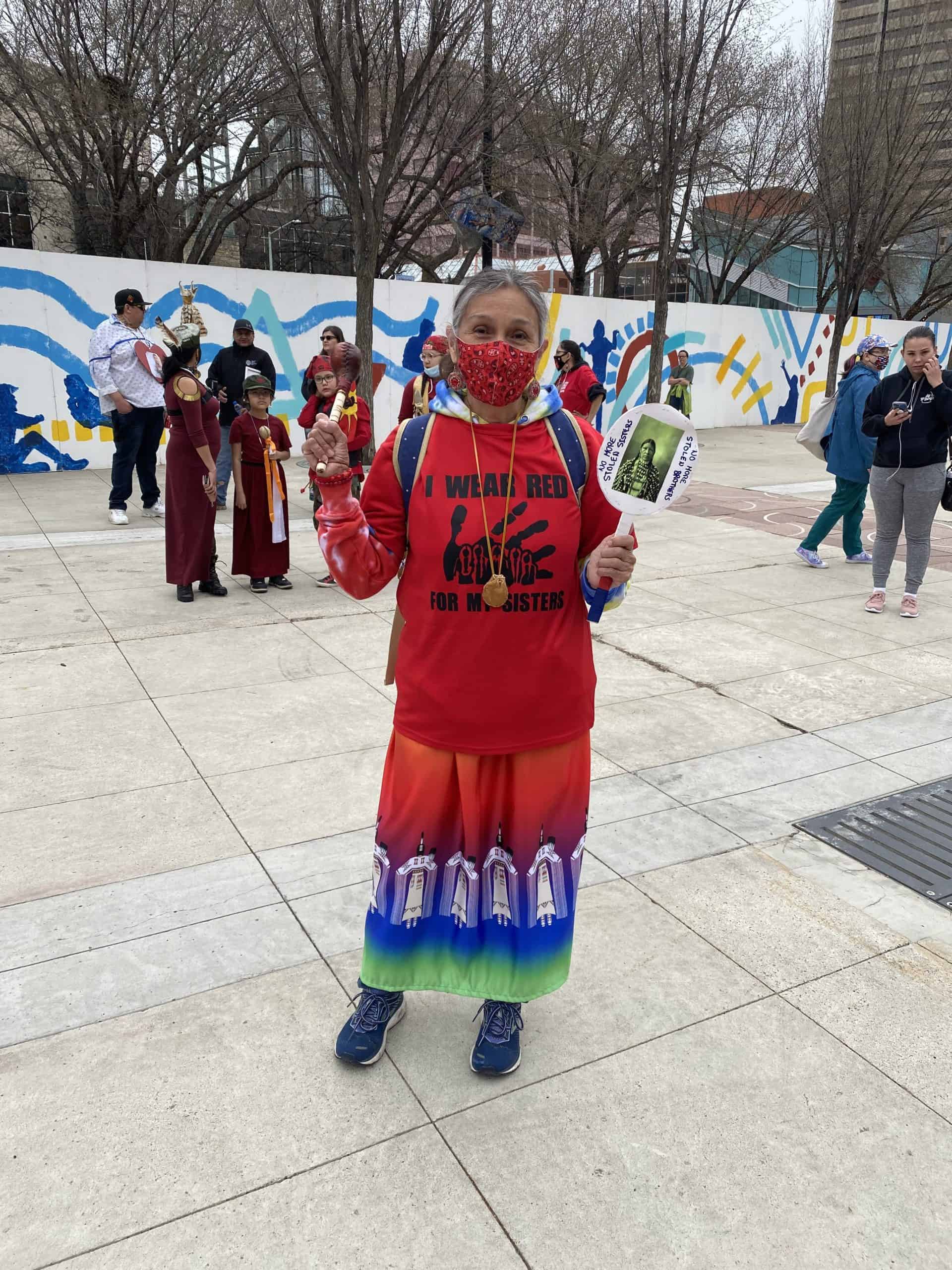Hundreds marched in solidarity
On May 5, Red Dress Day, hundreds of people gathered in Churchill Square to march in solidarity with missing and murdered Indigenous girls, women, men, and two-spirit individuals.
Participants attended wearing red — red ribbon skirts, red t-shirts, red dresses, red masks — and the group marched as a united red tide down Jasper Ave to Beaver Hills House Park.
The colour red has significance for Indigenous culture. “It’s the only colour spirits in our culture can see,” says Brandi Brazeau, the coordinator of the Red Ribbon Skirt volunteer group. She and fellow volunteers handed out 106 red ribbon skirts to the families of victims before the march. They met at the Stanley A. Milner Library for a month before the event to sew the skirts.
“We wear red because [the spirits] are lost and we want to call them back home and to honour them and walk with them,” continues Brazeau.
Families took turns sharing the stories of their loved ones who were missing or were murdered, speaking their names, and honouring them in an open mic session. Every name of a loved one was repeated by the crowd of supporters.
“Every one of us knows somebody who has been missing [or] murdered. No other culture in Canada can say that,” says Judith Gale of the Bear Clan Patrol who organized the event. “That’s the cross that we have to bear as Indigenous people, that we know too many who have been taken too soon.”
“Today is the day that we’re going to speak their names and we’re going to remember them and honour them in a good way,” says Gale.




The march was filled with many mixed emotions. There was solidarity, calls for reform, calls to end genocide, sombre remembrance, and a feeling of love.
“It just fills me with so much, so much good feeling here for all the love that’s here. This is love. This is for our people. And I just can’t express it. As soon as I saw this, it made me cry,” says Kihcikisikohk Iskwew, who has attended the march since 2014.
Keisha Cardinal attended the march for the second time on Thursday, marching for her father who was murdered two years ago. “There was no justice brought to him or his family or his kids,” says Cardinal, “so that’s why I’m out [at the march] today. And just for everybody else that’s out there, that’s missing or was murdered. They probably never got the justice either.”
“I feel humbled, I feel amazed that a lot of people showed up and you see a lot of different people here,” says Cardinal. “It’s a really wonderful thing to be able to be here.”
But it is also incredibly hard to be at the march, says Delores Gladue. “We shouldn’t be here,” Gladue says. “The march shouldn’t even be happening.” Gladue’s aunt was murdered in 1988. “When is it even going to end?” asks Gladue.



Red Dress Day is a reminder that Canada needs to be doing more. “I hope that Canada steps up and does something because this has been occurring since time immemorial, since time in colonialism,” says Iskwew. “Our women, and children, and our young men, two-spirited people, have been taken [and] killed, and nobody cares. Nobody cares. We have to bring the awareness to Canada. We have to because nobody else will.”







